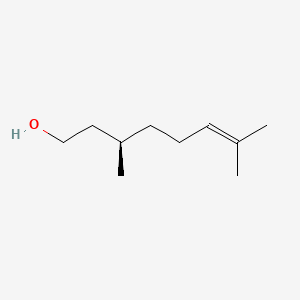| Authors | Title | Published | Journal | PubMed Link |
|---|---|---|---|---|
| Majumder AB et al. | Enantioselective transacetylation of (R,S)-beta-citronellol by propanol rinsed immobilized Rhizomucor miehei lipase. | 2007 | Chem Cent J | pmid:17880741 |
| Kurusu S et al. | Effects of arachidonate metabolism inhibitors on basal and human chorionic gonadotropin-stimulated progesterone secretion by rat corpus luteum cells in vitro. | 2007 | Prostaglandins Other Lipid Mediat. | pmid:17259080 |
| Zhang M et al. | Comparative study of aromatic compounds in young red wines from cabernet sauvignon, cabernet franc, and cabernet gernischet varieties in China. | 2007 | J. Food Sci. | pmid:17995710 |
| de Godoy MA and Rattan S | Role of phospholipase A2 (group I secreted) in the genesis of basal tone in the internal anal sphincter smooth muscle. | 2007 | Am. J. Physiol. Gastrointest. Liver Physiol. | pmid:17717042 |
| Chalimoniuk M et al. | Amyloid beta enhances cytosolic phospholipase A2 level and arachidonic acid release via nitric oxide in APP-transfected PC12 cells. | 2007 | Acta Biochim. Pol. | pmid:17713604 |
| Kuwata H et al. | A novel role of group VIB calcium-independent phospholipase A2 (iPLA2gamma) in the inducible expression of group IIA secretory PLA2 in rat fibroblastic cells. | 2007 | J. Biol. Chem. | pmid:17475622 |
| Aiyar N et al. | Lysophosphatidylcholine induces inflammatory activation of human coronary artery smooth muscle cells. | 2007 | Mol. Cell. Biochem. | pmid:16896535 |
| Rutkowska M et al. | Effects of cannabinoids on the anxiety-like response in mice. | 2006 Mar-Apr | Pharmacol Rep | pmid:16702621 |
| Serri NA et al. | Studies of reaction parameters on synthesis of Citronellyl laurate ester via immobilized Candida rugosa lipase in organic media. | 2006 | Bioprocess Biosyst Eng | pmid:16868763 |
| Ren J et al. | Lysophosphatidic acid is constitutively produced by human peritoneal mesothelial cells and enhances adhesion, migration, and invasion of ovarian cancer cells. | 2006 | Cancer Res. | pmid:16540649 |
| Aguilar JA et al. | The atu and liu clusters are involved in the catabolic pathways for acyclic monoterpenes and leucine in Pseudomonas aeruginosa. | 2006 | Appl. Environ. Microbiol. | pmid:16517656 |
| Choi HS | Lipolytic effects of citrus peel oils and their components. | 2006 | J. Agric. Food Chem. | pmid:16637681 |
| Hoi PM and Hiley CR | Vasorelaxant effects of oleamide in rat small mesenteric artery indicate action at a novel cannabinoid receptor. | 2006 | Br. J. Pharmacol. | pmid:16415907 |
| Hierro I et al. | In vivo larvicidal activity of monoterpenic derivatives from aromatic plants against L3 larvae of Anisakis simplex s.l. | 2006 | Phytomedicine | pmid:16785045 |
| Maruyama N et al. | Suppression of carrageenan- and collagen II-induced inflammation in mice by geranium oil. | 2006 | Mediators Inflamm. | pmid:16951493 |
| Johnson LM | Gitksan medicinal plants--cultural choice and efficacy. | 2006 | J Ethnobiol Ethnomed | pmid:16790066 |
| Saad el-Z et al. | Acaricidal activities of some essential oils and their monoterpenoidal constituents against house dust mite, Dermatophagoides pteronyssinus (Acari: Pyroglyphidae). | 2006 | J Zhejiang Univ Sci B | pmid:17111463 |
| Förster-Fromme K and Jendrossek D | Identification and characterization of the acyclic terpene utilization gene cluster of Pseudomonas citronellolis. | 2006 | FEMS Microbiol. Lett. | pmid:17064376 |
| Hsiao YY et al. | Comparison of transcripts in Phalaenopsis bellina and Phalaenopsis equestris (Orchidaceae) flowers to deduce monoterpene biosynthesis pathway. | 2006 | BMC Plant Biol. | pmid:16836766 |
| D'Orazi G et al. | Homeodomain-interacting protein kinase-2 restrains cytosolic phospholipase A2-dependent prostaglandin E2 generation in human colorectal cancer cells. | 2006 | Clin. Cancer Res. | pmid:16467083 |
beta-Citronellol
Beta-citronellol is a lipid of Prenol Lipids (PR) class. The involved functions are known as Glycolysis.
Cross Reference
Introduction
To understand associated biological information of beta-Citronellol, we collected biological information of abnormalities, associated pathways, cellular/molecular locations, biological functions, related genes/proteins, lipids and common seen animal/experimental models with organized paragraphs from literatures.
What diseases are associated with beta-Citronellol?
There are no associated biomedical information in the current reference collection.
No disease MeSH terms mapped to the current reference collection.
PubChem Associated disorders and diseases
What pathways are associated with beta-Citronellol
There are no associated biomedical information in the current reference collection.
PubChem Biomolecular Interactions and Pathways
Link to PubChem Biomolecular Interactions and PathwaysWhat cellular locations are associated with beta-Citronellol?
There are no associated biomedical information in the current reference collection.
What functions are associated with beta-Citronellol?
Related references are published most in these journals:
| Function | Cross reference | Weighted score | Related literatures |
|---|
What lipids are associated with beta-Citronellol?
There are no associated biomedical information in the current reference collection.
What genes are associated with beta-Citronellol?
There are no associated biomedical information in the current reference collection.
What common seen animal models are associated with beta-Citronellol?
There are no associated biomedical information in the current reference collection.
